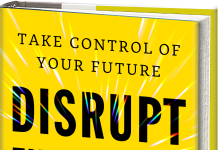
Over the last few years, we’ve gone from remote work being regarded as the exception to practically mandated as the rule. Organizations that had never offered a distributed work environment had to enable employees very quickly to be productive from home. In the past months, we’ve turned a corner and saw another transformation where companies are weighing the pros and cons of either a complete return to work, or some hybrid form with work weeks split between home and office. The latter requires greater effort by organizations to develop more streamlined approaches to the collaboration process and ensure employees are equipped with what they need to be effective no matter where they, or their colleagues, are working.
There are many considerations business leaders must take into account when making this transition, especially in cases where employees are dispersed across different time zones. Determining how to effectively track projects and ensure accountability are key. At Lenovo, our Cloud & Software team has been familiar with navigating these challenges since our team consists of individuals located all over the world, some working from Lenovo offices, while others work from home. To be effective, we had to find methods that enabled open communication and improved cross-collaboration skills.
Based on these experiences, there are four practices business leaders should consider when looking to empower employee success in a fluctuating work environment.
-
Inject flexibility into the collaborative process
Hybrid work environments require agility. It can be very difficult to get everyone together simultaneously, whether for brainstorming sessions, project planning, or some other collaborative effort. Often, the coordination this requires can be inefficient, especially in the software world, where many projects are deadline driven.
This is why flexibility is so important. Training employees to work effectively and productively at their own pace can help them become more self-reliant when it comes to time management. By facilitating project management and accountability in an asynchronous manner within a virtual team workspace, team members, no matter where they are located, can feel like they can successfully contribute, be heard, and receive feedback from their teammates.
-
Create shared spaces as a single source of truth
When teams are dispersed, it can be easy for individuals to opt for certain tools to track their day-to-day work, save projects, set goals, etc. However, when each team member picks a different tool, it can be counterproductive to the collaboration process, leading to misalignment and inefficiency.
Business leaders can overcome this challenge by selecting a central platform – where past, current, and future projects live – all team members can access, reference, and share. This platform can be considered a single source of truth to keep everyone on the same page and ensure transparency.
-
Ensure full transparency, but keep it secure
Speaking of transparency, a key concern for companies that enable a hybrid work model is the perceived lack of governance over company information outside the office and visibility into critical decisions made by colleagues on their teams. But transparency into that information can be needed for individuals to do their job effectively.
For example, at Lenovo, the Cloud & Software team strictly documents the decisions taken throughout our software development process. This ensures that everyone understands when a decision was made and why, strengthening accountability and allowing team members to refer back to decisions when related concerns or issues arise in the future.
This level of transparency can be beneficial for any business leader looking to empower their team and increase alignment. However, such information can be incredibly confidential, which is why housing this documentation behind a company firewall and VPN for added security is critical in a hybrid environment.
-
Use technology to work smarter, not harder
Technology can be incredibly powerful when achieving efficiency, productivity, and smart collaboration with dispersed employees. This idea of working smarter, not harder is the backbone of a hybrid work model, and it can be achieved by incorporating tools that automate processes and make it easier for employees to stay on track and synchronized no matter where they are located.
When determining the right combination of software and services, business leaders should consider how the team interacts most effectively, how they share information, and what each person’s job entails. Ultimately, companies should look for solutions that are seamless, automate certain processes to make employees’ jobs easier, and improve the user experience.
A tailored approach is beneficial here. Solutions should be selected to fit the needs of the team, but business leaders can also work with developers to build unique software applications and programs that solve specific problems their employees are encountering to support them in distinct and relevant ways.
A highly innovative case can be found in companies seeking to adopt AR/VR technology to enable employees to get more done in remote environments. Lenovo’s ThinkReality platform, for example, offers these businesses a proven, scalable, and streamlined path to developing custom enterprise XR applications from concept to production. By embracing such digital transformation, whether in or out of the Metaverse, companies can ensure their teams have the tools fit for them.
Don’t let “distributed” become “difficult”
By adopting new hybrid-forward collaboration strategies, enabling secure transparency, and leveraging technology tailored to team needs, the distributed workforce of today and tomorrow will be efficient, productive, and well-equipped to easily adapt to future disruptions in the evolving workplace.




